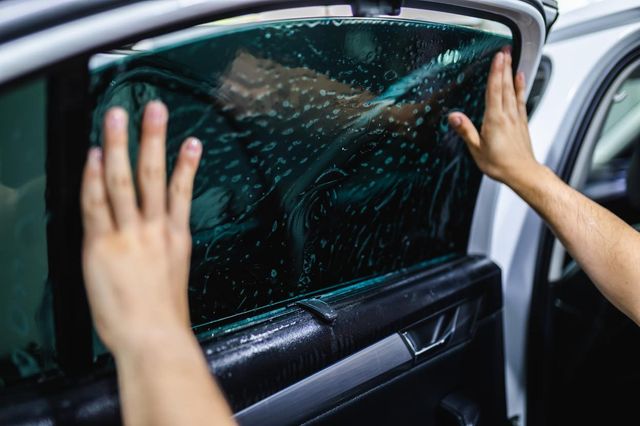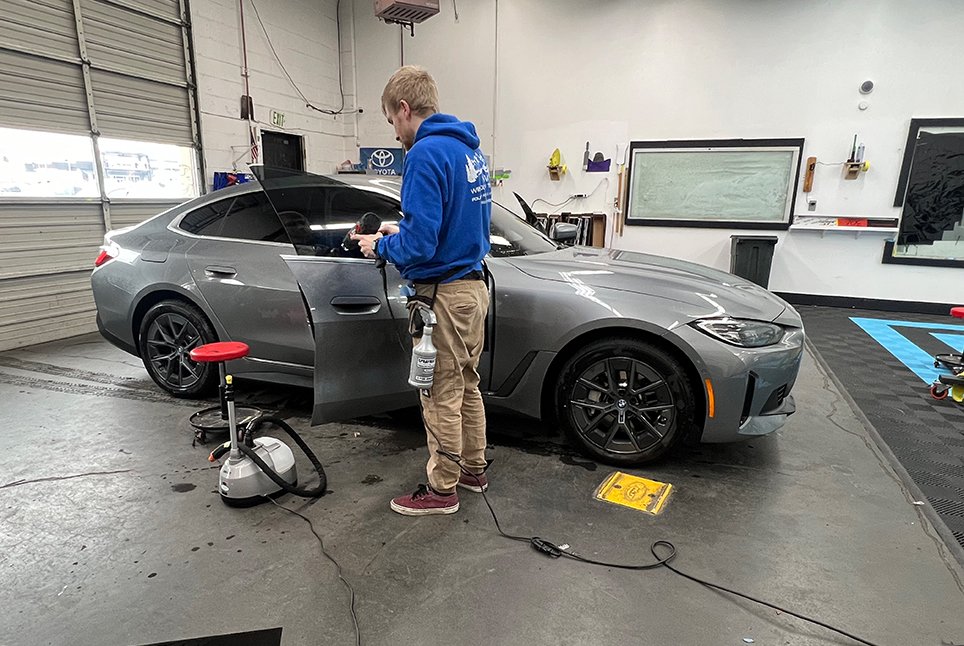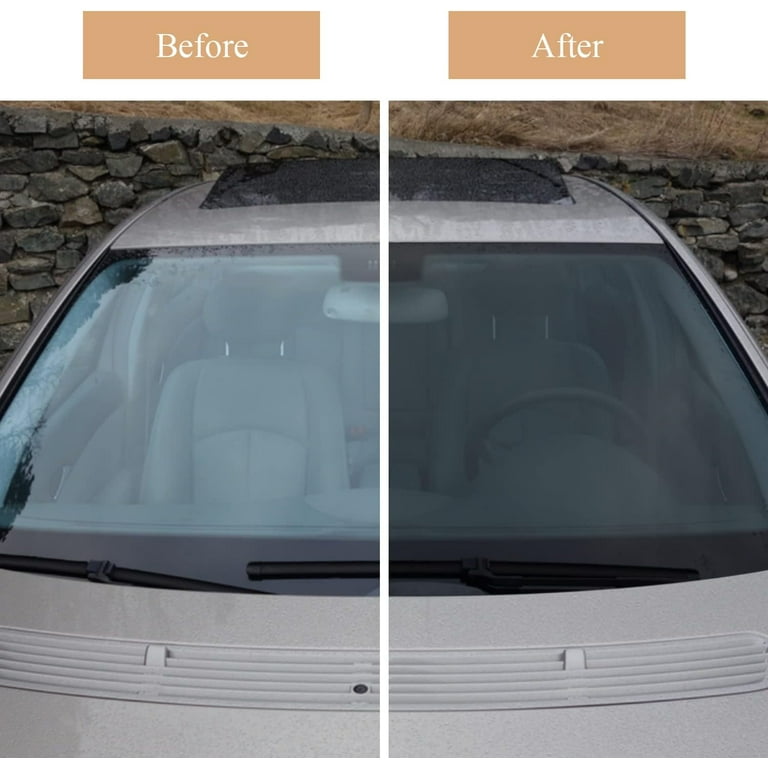Window Tinting Rules and Standards: What You Required to Know Prior To Tinting Your Cars And Truck
Before continuing with window tinting for your automobile, it is necessary to familiarize on your own with the varied legislations and standards that regulate this technique throughout different states. These regulations dictate the permitted levels of color darkness, usually determined by noticeable light transmission (VLT) percents, and consist of specific terms for front windshields targeted at guaranteeing roadway safety. Furthermore, particular territories may use medical exemptions for people with qualifying conditions. Understanding these complexities can conserve you from possible lawful implications, however what are the particular policies in your state?
Overview of Window Tinting Regulations
Home window tinting regulations are often based on variation throughout different jurisdictions, mirroring regional laws and safety and security factors to consider. These laws determine the permissible degrees of color darkness and reflectiveness on car windows, ensuring that drivers keep ample visibility while likewise safeguarding versus hazardous UV rays and warmth.
The majority of guidelines identify home window tinting based on the Visible Light Transmission (VLT) portion, which indicates the quantity of light that can pass via the home window. Generally, reduced VLT portions indicate darker colors. Legislations typically separate in between the front, side, and rear windows, with stricter limitations used to the front windshield to improve safety and security for both the chauffeur and various other road customers.
Furthermore, some jurisdictions enforce constraints on the reflectivity of the color, stopping extreme glow that might harm presence. Exemptions to these legislations might exist for individuals with details medical problems requiring extra sun security. Conformity with home window tinting guidelines is vital, as offenses can cause fines, obligatory removal of the tint, and prospective rises in insurance premiums. It is essential for car proprietors to familiarize themselves with neighborhood laws before continuing with home window tinting installations.
State-by-State Color Rules
Understanding the specific window tinting guidelines in each state is vital for car owners looking for to comply with the law. Each state in the U.S. has actually developed its very own set of rules controling home window tinting, which can vary significantly. These laws usually dictate the allowed levels of tint darkness, the kinds of windows that can be tinted, and any type of clinical exemptions that might use.
For example, states like The golden state have strict limitations on color darkness for front home windows, while others, such as New Mexico, might allow darker tints. Furthermore, particular states mandate certain presence percents for numerous windows, consisting of the windshield, front side windows, and back windows. It is essential for auto owners to familiarize themselves with their state's regulations to avoid potential penalties or fines.
Additionally, some states might need a certification sticker to be put on colored home windows, showing conformity with state laws. Failure to abide by these regulations not only risks legal consequences but can likewise influence safety and presence while driving. As a result, car owners need to perform comprehensive research or get in touch with regional authorities to make certain complete understanding and conformity with state-by-state tint regulations.
Allowed Color Degrees and Types
Many car proprietors may be shocked to learn that permitted color degrees and types differ extensively across various states. Each state has established its own regulations concerning the allowable darkness and reflectivity of home window tint, commonly gauged by Visible Light Transmission (VLT) percentages. VLT refers to the amount of light that can pass via the colored windows; thus, a lower percent indicates a darker tint.

Moreover, the types of tint materials allowed can vary, with some states restricting metallic or mirror-like more information surfaces. It is necessary for car proprietors to acquaint themselves with their state's specific laws to ensure conformity. Non-compliance can lead to penalties, necessary removal of the tint, or other lawful repercussions, making it imperative to understand these policies prior to waging setup.
Medical Exceptions for Tinting
While not all states provide allowances for clinical exemptions concerning home window tinting, those that do identify the need for particular people to enhance exposure and comfort because of medical problems. Numerous medical problems, such as lupus, skin cancer cells, and specific eye disorders, can provide people especially conscious sunlight. These people may require darker colors to secure themselves from harmful UV rays and glare.

It is essential to keep in mind that despite having a medical exemption, there may still be constraints on click for source the level of color permitted. Compliance with state legislations guarantees that individuals are both safeguarded and within lawful limits. Those taking into consideration clinical exemptions must contact their neighborhood Division of Motor Automobiles or equivalent authority to recognize the treatments and requirements required to get an exception effectively.
Charges for Non-Compliance
Falling short to abide by home window tinting regulations can result in substantial penalties, which differ by state. Law enforcement agencies are empowered to issue citations for automobiles that do not adhere to the specified tinting guidelines. These fines typically consist of fines, which can range from small total up to numerous hundred dollars, relying on the seriousness of the infraction and the state in inquiry.
In some territories, repeated offenses might lead to escalating penalties or additional penalties, such as mandatory court appearances. Moreover, non-compliance might require the elimination of prohibited tinting, typically at the owner's expense. In extreme cases, regular culprits may encounter suspension of their car registration up until conformity is attained.
Furthermore, insurance policy ramifications might arise from receiving several citations for home window color infractions. Insurance companies might see such offenses as an indicator of riskier actions, possibly resulting in boosted premiums or problem in insurance coverage.
To prevent these fines, it is important for car owners to familiarize themselves with their neighborhood home window tinting laws and make sure that their automobile complies (Window Tinting). This aggressive method not just avoids legal ramifications yet likewise promotes road security
Verdict

The majority of regulations classify window tinting based on the Visible Light Transmission (VLT) portion, which shows the amount of light that can pass via the home window. Conformity with window tinting guidelines is essential, as violations can result in penalties, required elimination of the tint, and prospective boosts in insurance policy premiums.Comprehending the particular home window tinting laws in each state is vital for automobile proprietors seeking to abide with the law. These laws typically determine the permitted levels of color darkness, the kinds of home windows that can be tinted, and any kind of medical exceptions that might apply.
For circumstances, states like The golden state have rigorous restrictions on tint darkness for front windows, while others, such as New Mexico, may allow darker colors.